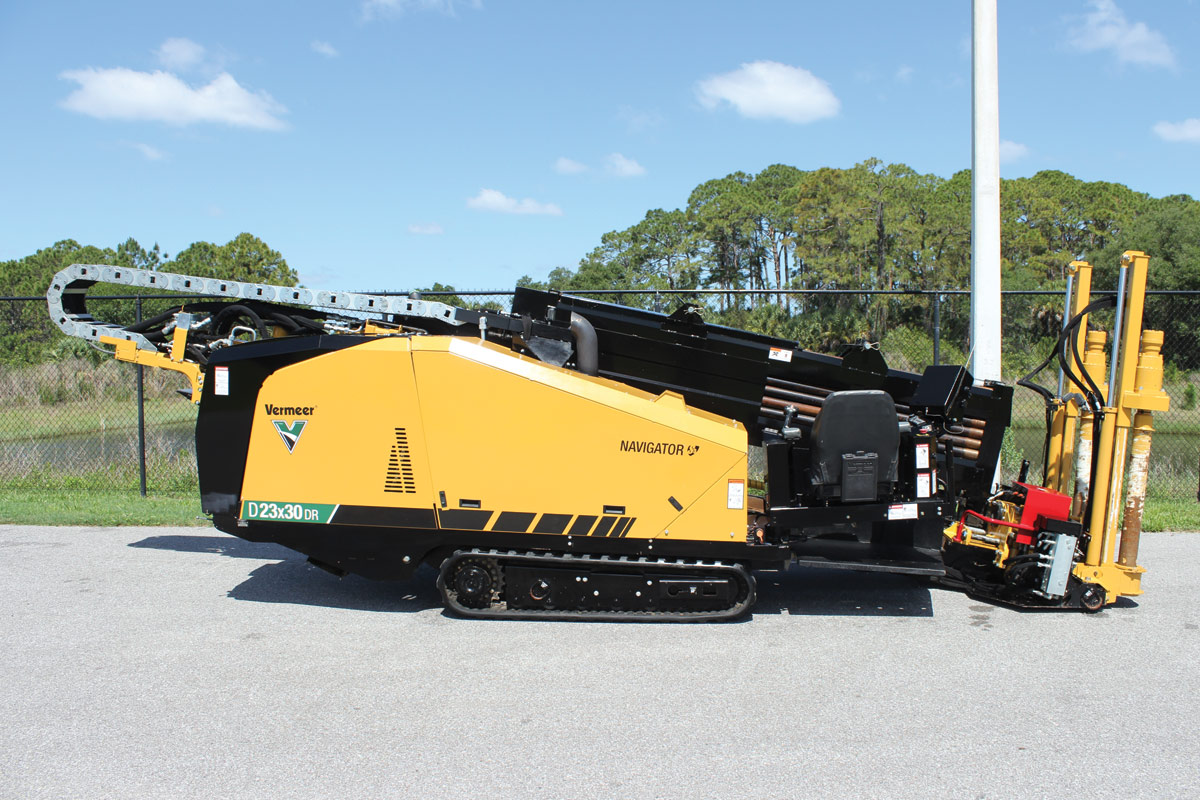
HDD In Lyon Township, Michigan — Growth Prompts New Potable Water Line
October 25, 2016
With population growth reaching record increases during the past decade and projections calling for the same, Lyon Township decided to run a new 11,000-ft potable water pipeline to accommodate its immediate and future needs. Additionally, the new line will make the land more attractive to developers. The Township funded the $1.6 million project through bonds and water funds and was installed in a dedicated easement and within the rights of way of the roads.Lyon Township in Oakland County, Mich., saw its population increase nearly 32 percent from 2000 to 2010 and is one of the fastest growing townships in southeast Michigan. The new line runs along Griswold Road, Eight Mile Road and Pontiac Trail under three wetland areas, a drainage crossing and roads near several residential and commercial areas.
Most of the project was horizontally directionally drilled (HDD) with transitions to ductile iron through gate wells, hydrant outlets and gate valve connections. Designed by Giffels Webster (Detroit), a total of 11,307 lf of 14-in. diameter SDR 11 PE 4710 high density polyethylene (HDPE) pipe was used for the system. The pipe is rated at 200 psi.
RELATED: HDPE in for the Long Haul Via HDD
“This was a publicly bid contract with the specification calling for HDPE SDR 11 pipe that met AWWA C906,” said Jason Mayer of Giffels Webster. “We’ve been designing projects using HDPE pipe for more than 20 years. With it, you don’t have to worry about pipe corroding in questionable soils. The pipe has a long design life in our opinion and the fused joints make a solid pipe with less chance of leakage in the system. We also seem to get competitive construction bids with a well-designed HDPE project.”
The pipe used from WL Plastics (Fort Worth, Texas), PE 4710, is the highest performance classification of HDPE piping material for water applications. According to Camille George Rubeiz, P. E., F. ASCE, director of engineering for Municipal and Industrial Division of the Plastics Pipe Institute, Inc. (PPI), “PE 4710 HDPE pipe is designed for water and wastewater applications meeting AWWA C906 and ASTM F714 standards and because of its toughness, flexibility, and durability, it is the material of choice for trenchless applications such as HDD, sliplining and also for pipe bursting and also for open cut applications.” PPI is the major trade association representing all segments of the plastic pipe industry.
“PE 4710 compounds offer an excellent level of performance,” Rubeiz continued. “This means that HDPE pipe can be used with increased flow capacities plus increased resistance to surge pressure, fatigue and slow crack growth. The ANSI/AWWA C906-15 standard includes PE 4710 for sizes up to 65 in. and recognizes the increased durability and reliability of HDPE pressure pipe used in water systems.”
RELATED: Training the Next Generation of HDD Operators
According to Rubeiz many engineers select the pipe’s pressure class based on the system’s working pressure and on the pipe’s static hoop stress capability. “To simplify these preliminary calculations, eTrenchless Group developed and maintains a web-based calculator called PPI PACE. The free program allows users to complete pressure pipe designs including water distribution lines, transmission main systems and force mains in accordance with existing AWWA and ASTM published standards”.

This was a publicly bid contract with the specification calling for HDPE SDR 11 pipe that met AWWA C906.
PPI PACE compares HDPE, PVC and Ductile Iron pipe, relevant standards used include AWWA C900, AWWA C901, AWWA C905, AWWA C906, C150/151 along with AWWA manuals such as M23, M55 and M41. PPI PACE also contains extensive information on the selection of design parameters and typical input values for all three major materials used in water systems.
“When feasible, HDD is the preferred method for installing pipe along a road, across a highway and across a creek, river or wetlands,” observed Rubeiz. “This is because it is much less invasive than digging full trenches. For HDD applications, HDPE is designed per ASTM F1962. To help design engineers and contractors in this critical step, eTrenchless Group created an online tool called PPI BoreAid for HDD applications. It can be used to make a preliminary evaluation of polyethylene pipe for use in a directional bore and can be found on the PPI website.”
Numerous life prediction studies have been conducted on HDPE and in most environmental situations prevalent within the U. S. and Canadian water systems, PE4710 materials can be designed for 100 years.
RELATED: Improved Design and Constructability through Four Trenchless Installation Methods for One HDPE Pipeline Project
“As the HDPE water and sewer markets continue to grow,” offered Tony Radoszewski, president of PPI, “it’s understood that it is beneficial to provide a trouble-free and leak-free systems that resist corrosion and ground movement. Plus, an HDPE line for drinking water will not promote biological growth so tuberculation effects are nullified and maintenance costs are potentially reduced. Installations costs and timelines are reduced by not disrupting established infrastructure and carbon footprint is reduced by smaller equipment and less operating times. As the demand for growing and replacing infrastructure increases, managing costs while providing the highest quality systems will not only benefit municipalities today but will continue long into the future and support future generations for many, many decades to come.
“Our members have reported,” explained Radoszewski, “and this agrees with a recent independent survey, that there was 10 percent growth in PE pipe sales during 2015. This occurred in a generally weak economy — one that is growing more slowly than at any other time since the late 1940s and the 1950s. This increase in pipe use is because end-users, government officials, engineers and contractors are fully realizing the value of polyethylene pipe.”
Lyon Township system design engineer Mayer agreed. “There are a lot more companies in the HDPE installation and directional drilling business than a short time ago,” he said. “And designers should reach out to their contractors and ask them their opinions.”
Steve Cooper has been reporting on the water and pipe industries for several decades.




